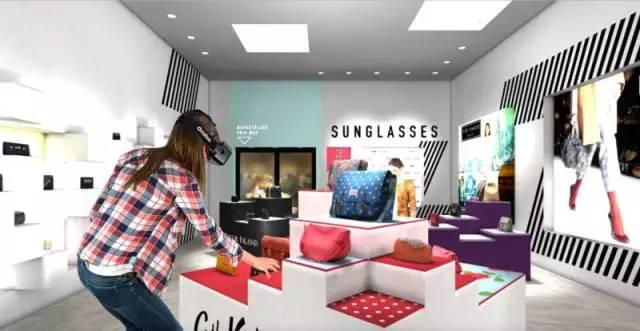Introducing Amazon’s New Service: Amazon Key
In the past few years, Jeff Bezos has accustomed us to many innovations, changing the way people around the world are shopping (on and offline), and designing future shopping habits. But this time the idea can be really game-changing. Right before Halloween, just to sound scary enough, Amazon announced Amazon Key, an innovative service facilitating in-home delivery. Launched in 37 US cities on Nov.8th, it’s a system comprised of an app, compatible smart lock, and cloud cam, exclusively available to Amazon Prime members, starting at $249.99.
How does it work?
Amazon Key’s system puts together a smart lock that could remotely open your door, an app sending you notifications, and a cloud camera showing you what’s happening, in real time. All integrated with Alexa. The security system works through a combination of these elements, and only grants access to a trusted and verified group of people.
Actually the idea of letting the delivery guy into your house – through a one-time passcode – was first devised by Walmart, but Amazon Key works differently. Adding a smart camera and an app to control everything, pushes the idea further, and makes it even more fascinating.
For deliveries, it works this way:
- Customer purchases and installs In-Home Kit, and downloads Amazon Key app
- Customer places an order with Amazon, selecting “in home” ship options
- On delivery day, customer receives a notification in the morning.
- When the delivery driver arrives at customers’ home with their package, Amazon verifies that the correct driver is at the right address, at the intended time, through an encrypted authentication process.
- Customer receives an “Arriving Now” notification, and customers can choose whether to watch the delivery happening live.
- Once the delivery driver is verified, Amazon Cloud Cam begins recording and unlocks the door. No special codes or keys are provided to the delivery driver.
- Delivery driver will always knock first, then driver will request to unlock the door via handheld delivery device.
- Amazon will unlock the door, then driver will open door, place package inside the house, and close the door.
- Once the door is closed and delivery is completed, delivery driver will send a request to securely lock the door. Drivers will not be able to proceed to next delivery until the customer’s door has been relocked.
- Customer receives a final notification and watch a video clip of the delivery.
This system, not only allows delivery companies to safely access your apartment and drop your packages, but also grants access to the people you trust, like your family, friends, dog walker, or house cleaner. No more leaving a key under the mat. Indeed, Amazon is soon rolling out integrations with Merry Maids, pet sitters and dog walkers on Rover.com and others via Amazon Home Services. Customers can set the frequency and length of time a person has access, and add or remove contacts as they see fit.
Future developments: benefits and threats
This system already sounds innovative and could help enhance worldwide business. But I believe the most exciting part is what such a service could be able to ignite, especially if connected to others. We can try to imagine how the future might look like if such a service will be employed globally, in most of people’s houses and public places.
Potential benefits
Let’s begin with something simple. At some point we might be carrying no more keys: one thing less to keep in mind – and to lose under your car seat.
Our houses could become safer: if there’s a camera inside and your smartphone can monitor all the points of access real time, thieves need to become really tech-savvy.
Going deeper, let’s also consider some new technologies that we’ve recently been introduced to, such as Virtual Reality and Face Recognition. In some places (i.e. China) the latter has been already applied to payment services, leading the world towards a cashless society. What happens if Amazon Key will connect with these technologies (and maybe Social Networks)? Besides deliveries, people can search online for any kind of service and get it at home: fast, with no trust issues and cashless.
In short, in (a not too far) future we’ll hopefully be able to destroy many implicit barriers and achieve a greater human cooperation – which actually is the direction that is convenient for us to take.
 Potential threats
Potential threats
First of all, Amazon will completely devour the market, at least in the first stage. Well, it’s already doing it, but giving them the power of opening/closing the most of our doors (while watching what happens inside) sounds a bit scary.
Let’s imagine an integration with face recognition technology. It could potentially grant Amazon – but actually any company or even governments having a deal with them – the power of knowing your face and your position (is this already happening?), and see who does what, even at home. This is a pretty powerful information to have, undermining our privacy rights.
 If we have no keys, what happens if the system goes down or gets hacked? What’s the backup system? Earlier we assumed that a camera pointing all your house’s entry points will make it safer. But what happens if hackers start monitoring people’s houses and then sell this information?
If we have no keys, what happens if the system goes down or gets hacked? What’s the backup system? Earlier we assumed that a camera pointing all your house’s entry points will make it safer. But what happens if hackers start monitoring people’s houses and then sell this information?
eCommerce implications
Nowadays shopping is already easier and more convenient than a decade ago. The digital revolution and the eCommerce boom are a fact, but systems like Amazon key – allowing customers to buy any product anytime while being sure to receive the delivery safely and hassle-free – will push this trend further.
eCommerce websites will need to adapt and develop features to allow this new practice. As well as delivery services, logistics companies and payment gateways. For example, returning goods might become easier, and automatically doable online, almost effortless.
Nevertheless, in an ideal world where online and offline shopping are perfectly integrated (we’ll get there at some point), physical retail shops might also radically evolve, together with the act of “shopping” as we know it. Since shops won’t need to keep large inventories anymore, they can potentially become hi-tech “choose and try centers”. People could go there to choose and try products, buy them and get them delivered anytime straight beyond their door. Meaning no more frustrated husbands carrying a bunch of shopping bags on Sundays.
Anyways, at TLG Commerce we’re already studying all the possible implications to keep the fast pace of our times. No worries, your trusted eCommerce partner will always keep you posted.
To Wrap Up
Well, we’re surely living exciting times. Benefits of this kind of innovations could be countless, as well as threats. What’s important here is to keep ourselves attentive to all changes, and make sure governments and media do as well, in an honest and transparent way.




